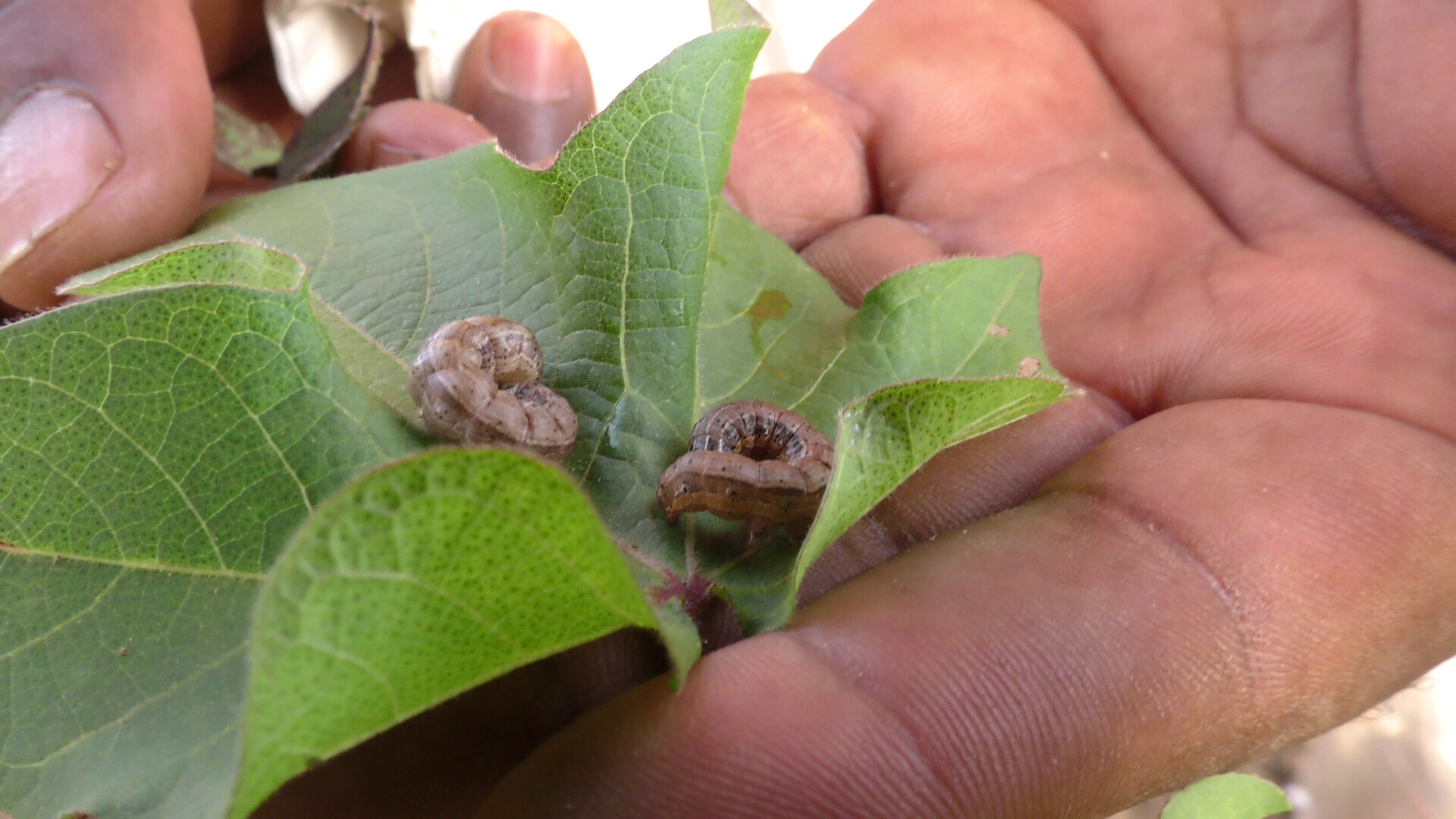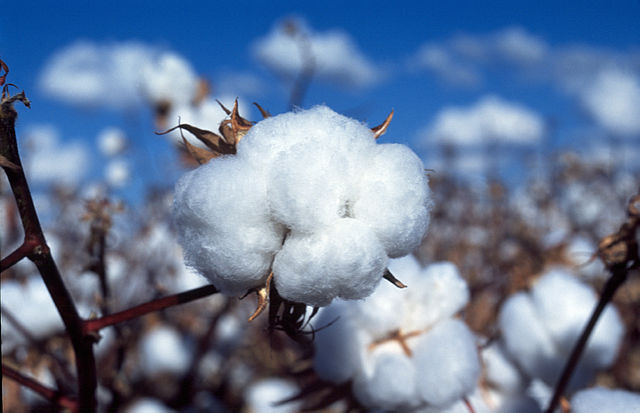This growing season, farmers on more than 1,000 cotton farms across Nigeria are growing genetically-modified (GM) cotton under the watchful eyes of scientists. Come harvest, the scientists will compare the modified cotton with the traditional strains also grown on these farms, carefully evaluating the new strains in terms of their resistance to pest attacks, fibre quality and adaptability to the Nigerian climate.
It’s a dry run for the end of 2020, when the modified variety is expected to go on sale nationwide in a first for the West African country. The modified varieties must show better traits than the traditional ones, otherwise they will not be released, says Amos Mohammed Sagir, a plant breeder with the Institute for Agricultural Research at Ahmadu Bello University, who leads the project. “When you are testing foreign materials, you use local materials to see which ones perform better. If the local variety performs better, then you don’t take the new variety,” he says.
It is a bold move, not least because Burkina Faso—the last and only West African country to introduce GM cotton commercially in 2008—abandoned it in 2015 after buyers complained that the cotton was low-quality with fibres too short to attract premium prices. Scientists like Sagir believe the lessons from Burkina Faso have been learnt, and that Nigeria’s experience will be different. “What happened in Burkina is a thing that will not happen with us here in Nigeria,” Sagir says.
But others—including Nigeria’s anti-GM lobby and environmentalists—say it’s a fool’s errand. “No nation, especially in Africa, should gamble with GM cotton,” says Nnimmo Bassey, director of ecological think tank, Health of Mother Earth Foundation. The foundation has called for a ban on genetically modified organisms (GMOs) in Nigeria and a review of laws to “close loopholes that allow for the unchecked infiltration of GMOs”.
A familiar standoff
If the standoff between scientists and environmentalists seems familiar, it’s because the type of cotton being planted here has been around for decades—and the controversy surrounding its introduction in Africa nearly as long.
The modified strain is known as Bt cotton. It has been engineered to include genes from naturally occurring soil bacteria, Bacillus thuringiensis, which makes it poisonous to insects who feed on it. This built-in pesticide is effective against bollworm, a pest that can decimate up to 90% of cotton fields if left unchecked. In Burkina Faso, before the introduction of Bt cotton, bollworm was destroying between 20% and 65% of cotton fields, even when farmers used pesticides to control it. Managing the pest cost farmers up to US$60 million annually.

The United States has been growing Bt cotton since 1996, and China since 1997. But Nigeria—and most of Africa—has been cautious of the technology. Rumours that GMOs cause diseases like cancer and kidney failure, or kill animals that feed on them, have put governments and consumers off. Nevertheless, in 2011, Nigeria passed the National Biosafety Management Act, which sets out the regulations scientists and corporations need to follow to put GM crops on the market.
Last year, the National Biosafety Agency greenlighted a request by the Nigerian arm of Indian firm Mahyco and scientists at Nigeria’s Institute for Agricultural Research to sell Indian-made Bt cotton seeds to Nigerian farmers. The seeds had already undergone confined field trials in Nigeria, but last year’s approval paved the way for the mass trial currently underway in the country. Now, expectations are high, as is skepticism. Many see it as a watershed moment for the technology in West Africa: boom or bust.
Sagir, for one, is optimistic. He expects that farmers will be pleased that Bt cotton has the potential to reduce their pesticide use by 50%—saving their money, improving their health, and preserving the environment. Another supporter is Rose Gidado, deputy director of Nigeria’s National Biotechnology Development Agency, who says that with Bt cotton, farmers could more than quadruple their yields from the current maximum of 0.9 tonnes per hectare to 4.4 tonnes per hectare.
But Burkina Faso’s experience shows it’s important to judge a GM crop variety on its actual performance, rather than on the benefits it’s predicted to have. The country commercialised Bt cotton in 2008 as part of a national biotechnology drive. Within six years, more than 70% of all cotton grown in that country was GM. One survey found that this led to a 22% increase in yield and a 51% profit gain for farming households.
However, all was not well. Buyers complained that the Bt cotton was yielding low-quality, short fibres that limited their attractiveness on the international market. In 2015, the cotton industry announced it would return to traditional cotton seeds. Traders claimed the debacle had cost them US$85 million over the five seasons GM cotton was grown.
Nigeria’s different strategy
Gidado says the risk that the same thing will happen in Nigeria is small. “Nigeria’s strategy is different,” she says. Where Burkinabe scientists took a chance and crossed an American Bt cotton variety with local varieties to produce a variant suitable for growing conditions in Burkina Faso—a process known as ‘backcrossing’—the Nigerian seed was developed in India, where it was produced to thrive in climatic conditions similar to Nigeria’s.
Sagir says that it was the backcrossing process that created an incompatibility in the Burkina Faso strain, which in turn impacted its quality. “That was why they went back to their own materials,” he says. Matthew Schnurr, an international development professor at Dalhousie University in Canada, who has studied Burkina Faso’s experience with Bt cotton, confirms that the backcrossing negatively impacted both the length and quality of the cotton, “which in turn lowered its price on the international market”.
Nigeria’s Bt cotton will involve no backcrossing. This, and the fact that the Indian variety is being tested thoroughly under real-farm conditions, is what gives Sagir confidence Nigeria will avoid Burkina Faso’s fate.
However, GMO opponents are not convinced by the assurances from Nigeria’s scientific community. Bassey from the Health of Mother Earth Foundation says the pests the Indian Bt cotton is meant to resist have already developed resistance to it in India. This, he says, is a warning Nigeria should take seriously. “Today, Burkina Faso is better off not growing GM cotton, whereas Nigeria is slipping into the hole they managed to escape from. It doesn’t show good sense for any country to slide down that failed path.”
As for Nigeria’s cotton farmers, Muyiwa Olatidoye, an agricultural consultant in Osun state who has studied farmers’ willingness to adopt new cotton varieties, is cautiously optimistic that they will accept GM seeds. “However, much needs to be done in the area of awareness and more importantly, on careful implementation,” he says.
Patience Koku who owns Replenish Farms in Kaduna State—a noted GM proponent who manages a 500 acre corn field—says she will go into cotton production once the Bt variety hits the market. “Before now, the devastation by the bollworm made me not to even consider it. But with Bt cotton now, I can make the investment on commercial scale. Because I now know it’s a viable business,” she says.
But Gloria Okon of the Fadama Cooperative Farmers’ Society in Katsina State, who previously has voiced concern about GMOs, is suspicious of the scientists and multinational firms promoting the GM cotton varieties. She says it’s “an indirect way of seeking to control our food systems” and she “will not be ready to grow them.”
Joseph Opoku Gakpo is a journalist based in Accra, Ghana, who covers environment, agriculture and rural development stories for Joy FM and Joy News TV. He is also a trained biotechnology expert with a degree in agricultural biotechnology. In 2016 he received a 12-week travel grant to visit the United States for leadership training by the Cornell Alliance for Science, a capacity building initiative that aims to “promote access to scientific innovation as a means of enhancing food security, improving environmental sustainability and raising the quality of life globally” whose main funder is the Bill & Melinda Gates Foundation.
Main image credit: CSIRO under CC 3.0 license
